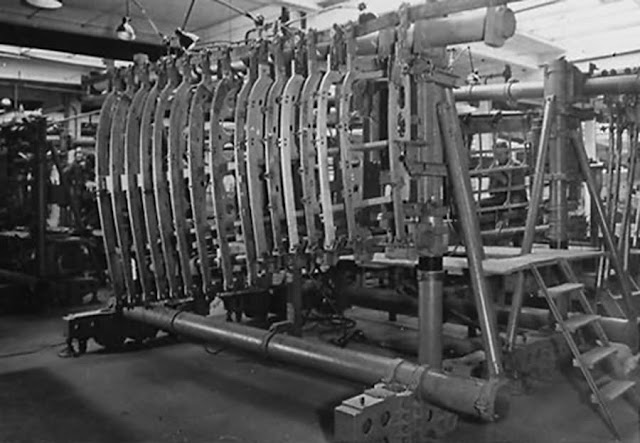 Wiener Neustädter Flugzeugwerke located about thirty miles south of Vienna is the charming city of Wiener Neustädt.
Wiener Neustädter Flugzeugwerke located about thirty miles south of Vienna is the charming city of Wiener Neustädt." The first aircraft production in Wiener Neustädt was begun in 1914 by the Oesterreichische Flugzeug Fabrik Aktiengesellschaft (Austrian Aircraft Factory, Incorporated). During WWI it produced the Oeffag C1 and C2 biplanes and Albatros D II and D III models. After the end of WWI in November 1918, the Treaty of Versailles
forbid military aircraft construction in the plant and all material therein was seized or destroyed. In 1927 Daimler Motors moved into the facility to produce bus and automobile bodies. In 1933 the facility was moved to Styer, and soon the sport biplane company in another of the buildings was shut down because of production difficulties.
Times were tough in Wiener Neustädt.
 |
| Overview of the factory |
Generalfeldmarschall Herman Gŏring and Generalluftzeugmeister Ernst Udet visited the Wiener Neustädter Flughavengesellschaft. They must have been impressed for on 16 May, operations of this plant were taken over and the facility at 120 Wienerstrasse was renamed Wiener Neustädter Flugzeugwerke (Wiener Neustädt Airplane Factory). This was soon followed by orders for the construction of barracks, hangars and other production facilities, and the WNF became an important part of the German war machine. This action brought with it the opportunity for employment, something welcomed by the large number of unemployed workers in Wiener Neustädt. The plant soon became an object of great prestige for those living in the area. Agri, Lampich and Meindl went on to play important roles in the short life of WNF...
...As the war progressed the German military realized that no production facility, refinery, railway or anything else was safe from destruction by the U S Army Air Forces. In an effort to offset this, especially where the production of aircraft was concerned they turned 5 to decentralization. Aircraft production became in some ways a “cottage industry”. The many small parts suppliers in the surrounding towns and villages were expanded in an effort to replace the capabilities lost with the destruction of the main plants. Between October 1943 and July 1944, WNF operations were dispersed to at least fifteen sites. Those known to the Allies were subject to attack by the Fifteenth Air Force. A number of the processes were, at various times, moved from Werke I and II at
Zwŏlfaxing, Bad Voslau, Neudorfl, and Neunkircfhen/Rohrbach. However, instead of solving a problem, these movements had adverse effects on production. This decentralization was not limited to WNF. From other plants, assembly lines were set up in forests, tunnels, and other underground facilities in Austria, Hungary, Czechoslovakia and other locations. "
Part of the text of Duane L. “Sparky” Bohnstedt
460th Bomb Group Historian

 |
| + KP of an unknown unit |
 |
| +CT Flak damaged of an unknown unit |
 |
| Heinkel He 111 G1 + DA of KG 55 |
 |
| +CT Possibly the other side of the flak damaged |
 |
| Possibly WNr 1423 lost on April 4th 1941 as G1 + DN of II. KG 55 |
 |
| Possibly WNr 1605, but definitely an aircraft from KG 54 |
 |
| The other side of G1 + DA |



























No comments:
Post a Comment